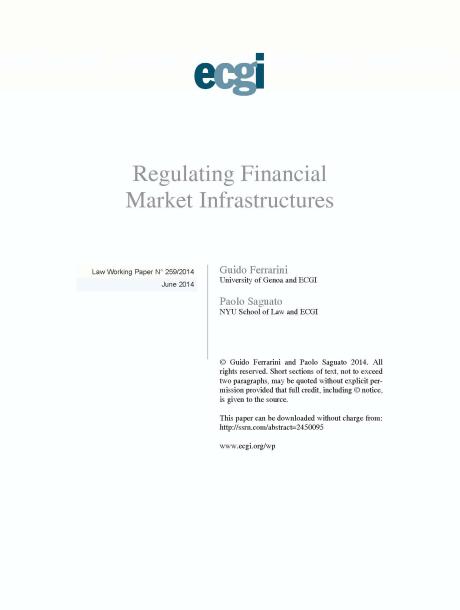
Regulating Financial Market Infrastructures
Abstract
This paper focuses on the impact of financial market infrastructures (FMIs) and of their regulation on the post-crisis transformation of securities and derivatives markets. It examines, in particular, the role that trading and post-trading FMIs, and their new regulatory regime, are playing in the expansion of ?public? securities and derivatives markets, and the progressive shrinkage of ?private? markets (which broadly coincide with the ?unregulated? or ?less regulated? over-the-counter (OTC) markets). The paper provides an overview of the policy approaches underlying the international crisis-era reforms to FMIs, and focuses on the dichotomy between the ?systemic risk? and ?transaction costs? approaches to financial markets and FMIs regulation. By reviewing the current move from ?private? markets to ?public? markets internationally, and with respect to the EU and US regimes, we analyze the role of trading infrastructures as liquidity providers, both in the securities markets and in the derivatives markets. And, shifting the focus to post-trading infrastructures ? central clearing houses (CCPs), central securities depositories (CSDs), and trade repositories (TRs) ? we address their role in supporting financial stability and market transparency. We conclude by identifying how regulators are now more deeply involved in FMIs? governance and operation. We argue that such policy approach resulted in regulatory initiatives which move in the direction of increasing the systemic scope of FMIs, introducing elements of publicity in private markets, and calling for higher public supervision.










